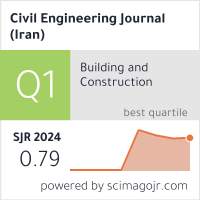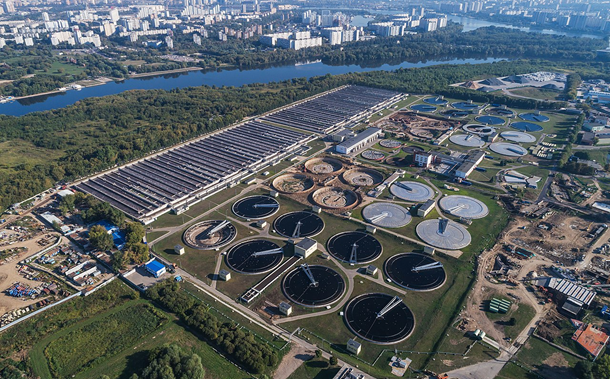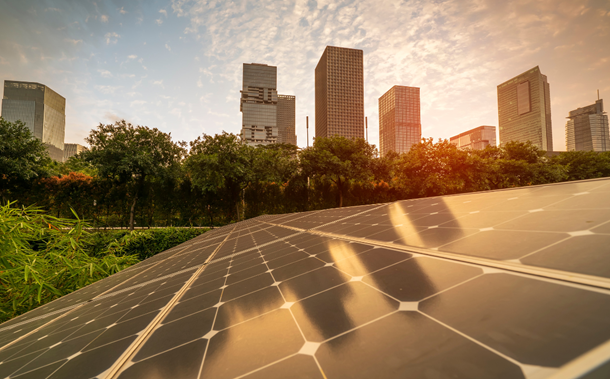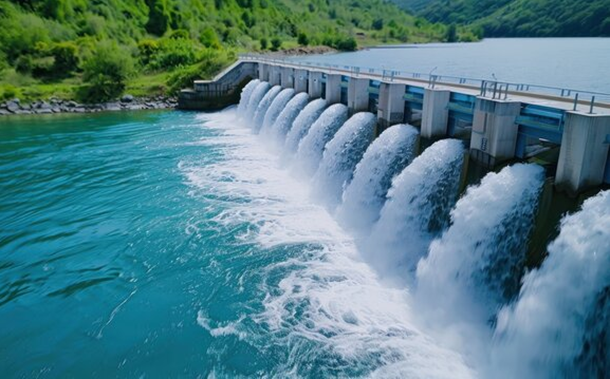Mechanical and Microstructural Properties of Geopolymer Concrete Containing Fly Ash and Sugarcane Bagasse Ash
Downloads
Doi:10.28991/CEJ-2024-010-04-018
Full Text:PDF
Downloads
[2] Farrant, W. E., Babafemi, A. J., Kolawole, J. T., & Panda, B. (2022). Influence of Sugarcane Bagasse Ash and Silica Fume on the Mechanical and Durability Properties of Concrete. Materials, 15(9), 3018. doi:10.3390/ma15093018.
[3] H.M., T., & Unnikrishnan, S. (2022). Utilization of industrial and agricultural waste materials for the development of geopolymer concrete- A review. Materials Today: Proceedings, 65, 1290–1297. doi:10.1016/j.matpr.2022.04.192.
[4] Tanu, H. M., & Unnikrishnan, S. (2023). Review on Durability of Geopolymer Concrete Developed with Industrial and Agricultural Byproducts. Materials Today: Proceedings, 1-7. doi:10.1016/j.matpr.2023.03.335.
[5] Alahmari, T. S., Abdalla, T. A., & Rihan, M. A. M. (2023). Review of Recent Developments Regarding the Durability Performance of Eco-Friendly Geopolymer Concrete. Buildings, 13(12). doi:10.3390/buildings13123033.
[6] Bellum, R. R., Venkatesh, C., & Madduru, S. R. C. (2021). Influence of red mud on performance enhancement of fly ash-based geopolymer concrete. Innovative Infrastructure Solutions, 6(4), 215. doi:10.1007/s41062-021-00578-x.
[7] Zareei, S. A., Ameri, F., & Bahrami, N. (2018). Microstructure, strength, and durability of eco-friendly concretes containing sugarcane bagasse ash. Construction and Building Materials, 184, 258–268. doi:10.1016/j.conbuildmat.2018.06.153.
[8] Shilar, F. A., Ganachari, S. V., Patil, V. B., Khan, T. M. Y., & Dawood Abdul Khadar, S. (2022). Molarity activity effect on mechanical and microstructure properties of geopolymer concrete: A review. Case Studies in Construction Materials, 16, 1014. doi:10.1016/j.cscm.2022.e01014.
[9] Garcia-Lodeiro, I., Palomo, A., & Fernández-Jiménez, A. (2015). An overview of the chemistry of alkali-activated cement-based binders. Handbook of Alkali-Activated Cements, Mortars and Concretes, 19–47, Woodhead Publishing, Sawston, United Kingdom. doi:10.1533/9781782422884.1.19.
[10] Mendes, B., Andrade, I. K., de Carvalho, J. M., Pedroti, L., & de Oliveira Júnior, A. (2021). Assessment of mechanical and microstructural properties of geopolymers produced from metakaolin, silica fume, and red mud. International Journal of Applied Ceramic Technology, 18(1), 262–274. doi:10.1111/ijac.13635.
[11] Moradikhou, A. B., Safehian, M., & Golafshani, E. M. (2023). High-strength geopolymer concrete based on coal washing waste. Construction and Building Materials, 362, 129675. doi:10.1016/j.conbuildmat.2022.129675.
[12] Ekinci, E., Türkmen, Ä°., Kantarci, F., & Karakoç, M. B. (2019). The improvement of mechanical, physical and durability characteristics of volcanic tuff based geopolymer concrete by using nano silica, micro silica and Styrene-Butadiene Latex additives at different ratios. Construction and Building Materials, 201, 257–267. doi:10.1016/j.conbuildmat.2018.12.204.
[13] Aliabdo, A. A., Abd Elmoaty, A. E. M., & Salem, H. A. (2016). Effect of water addition, plasticizer and alkaline solution constitution on fly ash based geopolymer concrete performance. Construction and Building Materials, 121, 694–703. doi:10.1016/j.conbuildmat.2016.06.062.
[14] Ng, C., Alengaram, U. J., Wong, L. S., Mo, K. H., Jumaat, M. Z., & Ramesh, S. (2018). A review on microstructural study and compressive strength of geopolymer mortar, paste and concrete. Construction and Building Materials, 186, 550–576. doi:10.1016/j.conbuildmat.2018.07.075.
[15] Salas, D. A., Ramirez, A. D., Ulloa, N., Baykara, H., & Boero, A. J. (2018). Life cycle assessment of geopolymer concrete. Construction and Building Materials, 190, 170–177. doi:10.1016/j.conbuildmat.2018.09.123.
[16] Karakoç, M. B., Türkmen, I., Maraş, M. M., Kantarci, F., Demirboʇa, R., & Uʇur Toprak, M. (2014). Mechanical properties and setting time of ferrochrome slag based geopolymer paste and mortar. Construction and Building Materials, 72, 283–292. doi:10.1016/j.conbuildmat.2014.09.021.
[17] Karthik, A., Sudalaimani, K., & Vijaya Kumar, C. T. (2017). Investigation on mechanical properties of fly ash-ground granulated blast furnace slag based self-curing bio-geopolymer concrete. Construction and Building Materials, 149, 338–349. doi:10.1016/j.conbuildmat.2017.05.139.
[18] Yaseri, S., Hajiaghaei, G., Mohammadi, F., Mahdikhani, M., & Farokhzad, R. (2017). The role of synthesis parameters on the workability, setting and strength properties of binary binder based geopolymer paste. Construction and Building Materials, 157, 534–545. doi:10.1016/j.conbuildmat.2017.09.102.
[19] Sakkas, K., Panias, D., Nomikos, P. P., & Sofianos, A. I. (2014). Potassium based geopolymer for passive fire protection of concrete tunnels linings. Tunnelling and Underground Space Technology, 43, 148–156. doi:10.1016/j.tust.2014.05.003.
[20] Sarker, P. K., Kelly, S., & Yao, Z. (2014). Effect of fire exposure on cracking, spalling and residual strength of fly ash geopolymer concrete. Materials and Design, 63, 584–592. doi:10.1016/j.matdes.2014.06.059.
[21] Cheng, T. W., & Chiu, J. P. (2003). Fire-resistant geopolymer produce by granulated blast furnace slag. Minerals Engineering, 16(3), 205–210. doi:10.1016/S0892-6875(03)00008-6.
[22] Ganesan, N., Abraham, R., & Deepa Raj, S. (2015). Durability characteristics of steel fibre reinforced geopolymer concrete. Construction and Building Materials, 93, 471–476. doi:10.1016/j.conbuildmat.2015.06.014.
[23] Lee, W. K. W., & Van Deventer, J. S. J. (2002). The effects of inorganic salt contamination on the strength and durability of geopolymers. Colloids and Surfaces A: Physicochemical and Engineering Aspects, 211(2–3), 115–126. doi:10.1016/S0927-7757(02)00239-X.
[24] Zhang, M., Guo, H., El-Korchi, T., Zhang, G., & Tao, M. (2013). Experimental feasibility study of geopolymer as the next-generation soil stabilizer. Construction and Building Materials, 47, 1468–1478. doi:10.1016/j.conbuildmat.2013.06.017.
[25] Komnitsas, K., & Zaharaki, D. (2007). Geopolymerisation: A review and prospects for the minerals industry. Minerals Engineering, 20(14), 1261–1277. doi:10.1016/j.mineng.2007.07.011.
[26] Bellum, R. R., Muniraj, K., & Madduru, S. R. C. (2020). Influence of activator solution on microstructural and mechanical properties of geopolymer concrete. Materialia, 10, 100659. doi:10.1016/j.mtla.2020.100659.
[27] Hardjito, D., Wallah, S. E., Sumajouw, D. M. J., & Rangan, B. V. (2004). On the development of fly ash-based geopolymer concrete. ACI Materials Journal, 101(6), 467–472. doi:10.14359/13485.
[28] Yip, C. K., Lukey, G. C., Provis, J. L., & van Deventer, J. S. J. (2008). Effect of calcium silicate sources on geopolymerisation. Cement and Concrete Research, 38(4), 554–564. doi:10.1016/j.cemconres.2007.11.001.
[29] Amin, M., Elsakhawy, Y., Abu el-hassan, K., & Abdelsalam, B. A. (2022). Behavior evaluation of sustainable high strength geopolymer concrete based on fly ash, metakaolin, and slag. Case Studies in Construction Materials, 16. doi:10.1016/j.cscm.2022.e00976.
[30] Zaid, O., Abdulwahid Hamah Sor, N., Martínez-García, R., de Prado-Gil, J., Mohamed Elhadi, K., & Yosri, A. M. (2024). Sustainability evaluation, engineering properties and challenges relevant to geopolymer concrete modified with different nanomaterials: A systematic review. Ain Shams Engineering Journal, 15(2), 102373. doi:10.1016/j.asej.2023.102373.
[31] Tian, Z., Tang, X., Xiu, Z., Zhou, H., & Xue, Z. (2022). The mechanical properties improvement of environmentally friendly fly ash-based geopolymer mortar using bio-mineralization. Journal of Cleaner Production, 332, 130020. doi:10.1016/j.jclepro.2021.130020.
[32] Bezabih, T., Kanali, C., & Thuo, J. (2023). Effects of teff straw ash on the mechanical and microstructural properties of ambient cured fly ash-based geopolymer mortar for onsite applications. Results in Engineering, 18, 101123. doi:10.1016/j.rineng.2023.101123.
[33] Suraneni, P., Burris, L., Shearer, C. R., & Hooton, R. D. (2021). ASTM C618 fly ash specification: Comparison with other specifications, shortcomings, and solutions. ACI Materials Journal, 118(1), 157–167. doi:10.14359/51725994.
[34] Zhuang, X. Y., Chen, L., Komarneni, S., Zhou, C. H., Tong, D. S., Yang, H. M., Yu, W. H., & Wang, H. (2016). Fly ash-based geopolymer: Clean production, properties and applications. Journal of Cleaner Production, 125, 253–267. doi:10.1016/j.jclepro.2016.03.019.
[35] Kaya, M., Uysal, M., Yilmaz, K., Karahan, O., & Atis, C. D. (2020). Mechanical properties of class C and F fly ash geopolymer mortars. Gradjevinar, 72(4), 297–309. doi:10.14256/JCE.2421.2018.
[36] Wattimena, O. K., Antoni, & Hardjito, D. (2017). A review on the effect of fly ash characteristics and their variations on the synthesis of fly ash based geopolymer. AIP Conference Proceedings, 1887, 020041. doi:10.1063/1.5003524.
[37] El-said, A., Awad, A., Ahmad, M., Sabri, M. M. S., Deifalla, A. F., & Tawfik, M. (2022). The Mechanical Behavior of Sustainable Concrete Using Raw and Processed Sugarcane Bagasse Ash. Sustainability (Switzerland), 14(18), 11181. doi:10.3390/su141811181.
[38] Torres de Sande, V., Sadique, M., Pineda, P., Bras, A., Atherton, W., & Riley, M. (2021). Potential use of sugar cane bagasse ash as sand replacement for durable concrete. Journal of Building Engineering, 39, 102277. doi:10.1016/j.jobe.2021.102277.
[39] Ganesan, K., Rajagopal, K., & Thangavel, K. (2007). Evaluation of bagasse ash as supplementary cementitious material. Cement and Concrete Composites, 29(6), 515–524. doi:10.1016/j.cemconcomp.2007.03.001.
[40] Murugesan, T., Vidjeapriya, R., & Bahurudeen, A. (2020). Sugarcane Bagasse Ash-Blended Concrete for Effective Resource Utilization Between Sugar and Construction Industries. Sugar Tech, 22(5), 858–869. doi:10.1007/s12355-020-00794-2.
[41] Memon, S. A., Javed, U., Shah, M. I., & Hanif, A. (2022). Use of Processed Sugarcane Bagasse Ash in Concrete as Partial Replacement of Cement: Mechanical and Durability Properties. Buildings, 12(10), 1769. doi:10.3390/buildings12101769.
[42] Loganayagan, S., Mohan, N. C., & Dhivyabharathi, S. (2021). Sugarcane bagasse ash as alternate supplementary cementitious material in concrete. Materials Today: Proceedings, 45, 1004–1007. doi:10.1016/j.matpr.2020.03.060.
[43] Jagadesh, P., Ramachandramurthy, A., & Murugesan, R. (2018). Evaluation of mechanical properties of Sugar Cane Bagasse Ash concrete. Construction and Building Materials, 176, 608–617. doi:10.1016/j.conbuildmat.2018.05.037.
[44] Dineshkumar, R., & Balamurugan, P. (2021). Behavior of high-strength concrete with sugarcane bagasse ash as replacement for cement. Innovative Infrastructure Solutions, 6(2). doi:10.1007/s41062-020-00450-4.
[45] Jha, P., Sachan, A. K., & Singh, R. P. (2021). Agro-waste sugarcane bagasse ash (ScBA) as partial replacement of binder material in concrete. Materials Today: Proceedings, 44, 419–427. doi:10.1016/j.matpr.2020.09.751.
[46] Chindaprasirt, P., Sujumnongtokul, P., & Posi, P. (2019). Durability and mechanical properties of pavement concrete containing bagasse ash. Materials Today: Proceedings, 17, 1612–1626. doi:10.1016/j.matpr.2019.06.191.
[47] Sua-Iam, G., & Makul, N. (2013). Use of increasing amounts of bagasse ash waste to produce self-compacting concrete by adding limestone powder waste. Journal of Cleaner Production, 57, 308–319. doi:10.1016/j.jclepro.2013.06.009.
[48] Wuttisombatjaroen, J., Hemnithi, N., & Chaturabong, P. (2023). Investigating the influence of rigden void of fillers on the moisture damage of asphalt mixtures. Civil Engineering Journal, 9(12), 3161-3173. doi:10.28991/CEJ-2023-09-12-014.
[49] Atia, S. M., & Abbas, W. A. (2022). Effect of adding nano starch biopolymer on some properties of silica fume concrete. Key Engineering Materials, 911, 145-150. doi:10.4028/p-2i42va.
[50] Ahmad, W., Ahmad, A., Ostrowski, K. A., Aslam, F., Joyklad, P., & Zajdel, P. (2021). Sustainable approach of using sugarcane bagasse ash in cement-based composites: A systematic review. Case Studies in Construction Materials, 15, 698. doi:10.1016/j.cscm.2021.e00698.
[51] Kathirvel, P., Gunasekaran, M., Sreekumaran, S., & Krishna, A. (2020). Effect of partial replacement of ground granulated blast furnace slag with sugarcane bagasse ash as source material in the production of geopolymer concrete. Medziagotyra, 26(4), 477–481. doi:10.5755/j01.ms.26.4.23602.
[52] Azad, N. M., & Samarakoon, S. M. S. M. K. (2021). Utilization of industrial by-products/waste to manufacture geopolymer cement/concrete. Sustainability (Switzerland), 13(2), 1–22. doi:10.3390/su13020873.
[53] Singh, K. (2020). Experimental study on metakolin and baggashe ash based geopolymer concrete. Materials Today: Proceedings, 37(Part 2), 3289–3295. doi:10.1016/j.matpr.2020.09.116.
[54] H.M., T., & Unnikrishnan, S. (2023). Mechanical Strength and Microstructure of GGBS-SCBA based Geopolymer Concrete. Journal of Materials Research and Technology, 24, 7816–7831. doi:10.1016/j.jmrt.2023.05.051.
[55] Vanathi, V., Nagarajan, V., & Jagadesh, P. (2023). Influence of sugarcane bagasse ash on mechanical properties of geopolymer concrete. Journal of Building Engineering, 79, 107836. doi:10.1016/j.jobe.2023.107836.
[56] Alghannam, M., Albidah, A., Abbas, H., & Al-Salloum, Y. (2021). Influence of Critical Parameters of Mix Proportions on Properties of MK-Based Geopolymer Concrete. Arabian Journal for Science and Engineering, 46(5), 4399–4408. doi:10.1007/s13369-020-04970-0.
[57] Sarkar, M., & Dana, K. (2021). Partial replacement of metakaolin with red ceramic waste in geopolymer. Ceramics International, 47(3), 3473–3483. doi:10.1016/j.ceramint.2020.09.191.
[58] Upadhyay, D., Chanda, A., & Thakkar, S. (2023). Mixture Design of High-Strength Geopolymer Concrete. Materials Today: Proceedings, 93, 335–339. doi:10.1016/j.matpr.2023.07.265.
[59] Shoaei, P., Musaeei, H. R., Mirlohi, F., Narimani zamanabadi, S., Ameri, F., & Bahrami, N. (2019). Waste ceramic powder-based geopolymer mortars: Effect of curing temperature and alkaline solution-to-binder ratio. Construction and Building Materials, 227, 116686. doi:10.1016/j.conbuildmat.2019.116686.
[60] Nematollahi, B., & Sanjayan, J. (2014). Effect of different superplasticizers and activator combinations on workability and strength of fly ash based geopolymer. Materials and Design, 57, 667–672. doi:10.1016/j.matdes.2014.01.064.
[61] Hanjitsuwan, S., Hunpratub, S., Thongbai, P., Maensiri, S., Sata, V., & Chindaprasirt, P. (2014). Effects of NaOH concentrations on physical and electrical properties of high calcium fly ash geopolymer paste. Cement and Concrete Composites, 45, 9–14. doi:10.1016/j.cemconcomp.2013.09.012.
[62] Rukzon, S., & Chindaprasirt, P. (2012). Utilization of bagasse ash in high-strength concrete. Materials and Design, 34, 45–50. doi:10.1016/j.matdes.2011.07.045.
[63] Andrade Neto, J. da S., de França, M. J. S., Amorim Júnior, N. S. de, & Ribeiro, D. V. (2021). Effects of adding sugarcane bagasse ash on the properties and durability of concrete. Construction and Building Materials, 266, 120959. doi:10.1016/j.conbuildmat.2020.120959.
[64] Abdalla, T. A., Koteng, D. O., Shitote, S. M., & Matallah, M. (2022). Mechanical and durability properties of concrete incorporating silica fume and a high volume of sugarcane bagasse ash. Results in Engineering, 16, 100666. doi:10.1016/j.rineng.2022.100666.
[65] Yadav, A. L., Sairam, V., Muruganandam, L., & Srinivasan, K. (2020). An overview of the influences of mechanical and chemical processing on sugarcane bagasse ash characterisation as a supplementary cementitious material. Journal of Cleaner Production, 245. doi:10.1016/j.jclepro.2019.118854.
[66] Chusilp, N., Jaturapitakkul, C., & Kiattikomol, K. (2009). Utilization of bagasse ash as a pozzolanic material in concrete. Construction and Building Materials, 23(11), 3352–3358. doi:10.1016/j.conbuildmat.2009.06.030.
[67] Jha, P., Sachan, A.K., & Singh, R.P. (2021). Bagasse Ash (ScBa) and Its Utilization in Concrete as Pozzolanic Material: A Review. Advances in Geotechnics and Structural Engineering. Lecture Notes in Civil Engineering, 143. Springer, Singapore. doi:10.1007/978-981-33-6969-6_41.
[68] Srinivas, D., Suresh, D., & Lakshmi, N. H. (2021). Experimental Investigation on Bagasse ash Based Geopolymer Concrete Subjected to Elevated Temperature. IOP Conference Series: Earth and Environmental Science, 796(1). doi:10.1088/1755-1315/796/1/012028.
[69] Landa-Ruiz, L., Landa-Gómez, A., Mendoza-Rangel, J. M., Landa-Sánchez, A., Ariza-Figueroa, H., Méndez-Ramírez, C. T., Santiago-Hurtado, G., Moreno-Landeros, V. M., Croche, R., & Baltazar-Zamora, M. A. (2021). Physical, mechanical and durability properties of ecofriendly ternary concrete made with sugar cane bagasse ash and silica fume. Crystals, 11(9). doi:10.3390/cryst11091012.
[70] Marvila, M. T., de Azevedo, A. R. G., de Matos, P. R., Monteiro, S. N., & Vieira, C. M. F. (2021). Rheological and the fresh state properties of alkali-activated mortars by blast furnace slag. Materials, 14(8). doi:10.3390/ma14082069.
[71] Shafiq, N., Hussein, A. A. E., Nuruddin, M. F., & Al Mattarneh, H. (2018). Effects of sugarcane bagasse ash on the properties of concrete. Proceedings of the Institution of Civil Engineers: Engineering Sustainability, 171(3), 123–132. doi:10.1680/jensu.15.00014.
[72] Moradikhou, A. B., Bahador Moradikhou, A., & Safehian, M. (n.d.). Comparison of Mechanical Strengths and Resistance to Acidic Conditions, Permeability and Resistance to Elevated Temperatures of Geopolymer Concrete and Conventional Concrete. Advance Researches in Civil Engineering, 3(2), 27–37. doi:10.30469/ARCE.2021.135124.
[73] Silva, P. De, Sagoe-Crenstil, K., & Sirivivatnanon, V. (2007). Kinetics of geopolymerization: Role of Al2O3 and SiO2. Cement and Concrete Research, 37(4), 512–518. doi:10.1016/j.cemconres.2007.01.003.
[74] Ranjbar, N., Mehrali, M., Behnia, A., Alengaram, U. J., & Jumaat, M. Z. (2014). Compressive strength and microstructural analysis of fly ash/palm oil fuel ash based geopolymer mortar. Materials & Design, 59, 532–539. doi:10.1016/j.matdes.2014.03.037.
[75] Davidovits, J. (2017). Geopolymers: Ceramic-like inorganic polymers. Journal of Ceramic Science and Technology, 8(3), 335–350. doi:10.4416/JCST2017-00038.
[76] Saloni, Parveen, Yan Lim, Y., & Pham, T. M. (2021). Influence of Portland cement on performance of fine rice husk ash geopolymer concrete: Strength and permeability properties. Construction and Building Materials, 300, 124321. doi:10.1016/j.conbuildmat.2021.124321.
- Authors retain all copyrights. It is noticeable that authors will not be forced to sign any copyright transfer agreements.
- This work (including HTML and PDF Files) is licensed under a Creative Commons Attribution 4.0 International License.![]()















